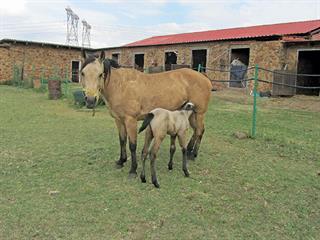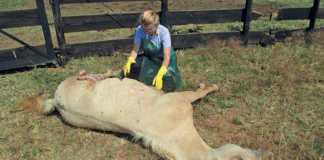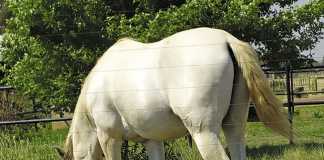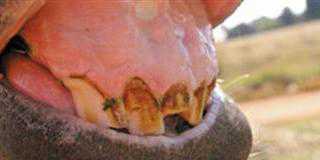
Good breeders have long known that colostrum, or first milk, is essential to the health of a newborn foal. More recently, research has developed ways of measuring colostrum quality to ascertain if it meets a foal’s needs. These methods can also be used for testing colostrum for harvesting and storage in case of an emergency. When a mare produces too little colostrum, or colostrum of poor quality, harvested colostrum can be defrosted and fed to the newborn foal.
Ideally, colostrum should contain sufficient antibodies and energy to sustain a foal in the first 24 hours of its life as well as protect it from disease. It should be thick, sticky, clear and straw-coloured, not thin and watery, or milky. Two colostrum tests are commonly used. The first is the Brix refractometer, which tests for optical density. The second is the colostrometer, which measures specific gravity.
The Brix refractometer uses the refraction of light to measure the level of immunoglobulins in colostrum. These are proteins that account for the thick, gluey consistency and yellow colour of high-quality colostrum. Readings vary from 15% to 30%, where the best colostrum registers 30% refraction while readings of 20% and lower are of unacceptable quality, with too few immunoglobulins present.
Low readings are typically found in mares that have excreted most of their colostrum before the foal is born. The specific gravity measured by the colostrometer is also related to the level of antibodies, with high quality colostrum showing a reading of 1,1 or greater, and poor quality 1,06 or lower.
Harvesting
The best mares to use as colostrum donors are those that have had several foals and always have a good milk supply. They should also be from the same farm, so that they have antibodies to common diseases in the area. In addition, they must have been vaccinated regularly against tetanus, equine influenza and African horse sickness.
Colostrum should only be harvested from mares negative for neonatal isoerythrolysis, a fatal auto-immune disease that causes certain foals to break down their red blood cells. Collection should be performed under sterile conditions, as any microbial contaminants could infect a foal when the colostrum is defrosted. The mare’s udder must be washed gently with clean water to remove any dirt. Vaseline can be used as a lubricant to make milking out easier.
Milking
Within one hour of foaling, or before the foal has suckled, milk one side of the udder into a sterilised, wide-mouthed glass bottle. Between 200ml and 500ml can be milked if you are patient and careful. Milk by hand with regular downward massaging, unless a specialised milking machine is available. After filtering, freeze the colostrum in 300ml plastic bottles that are well-sealed and wrapped in cling wrap.
Label the bottles with the date and the mare’s name. Colostrum can be stored in a household freezer for up to two years. Defrost the colostrum by standing the bottle in hot water. A microwave should never be used as it denatures the antibodies.













